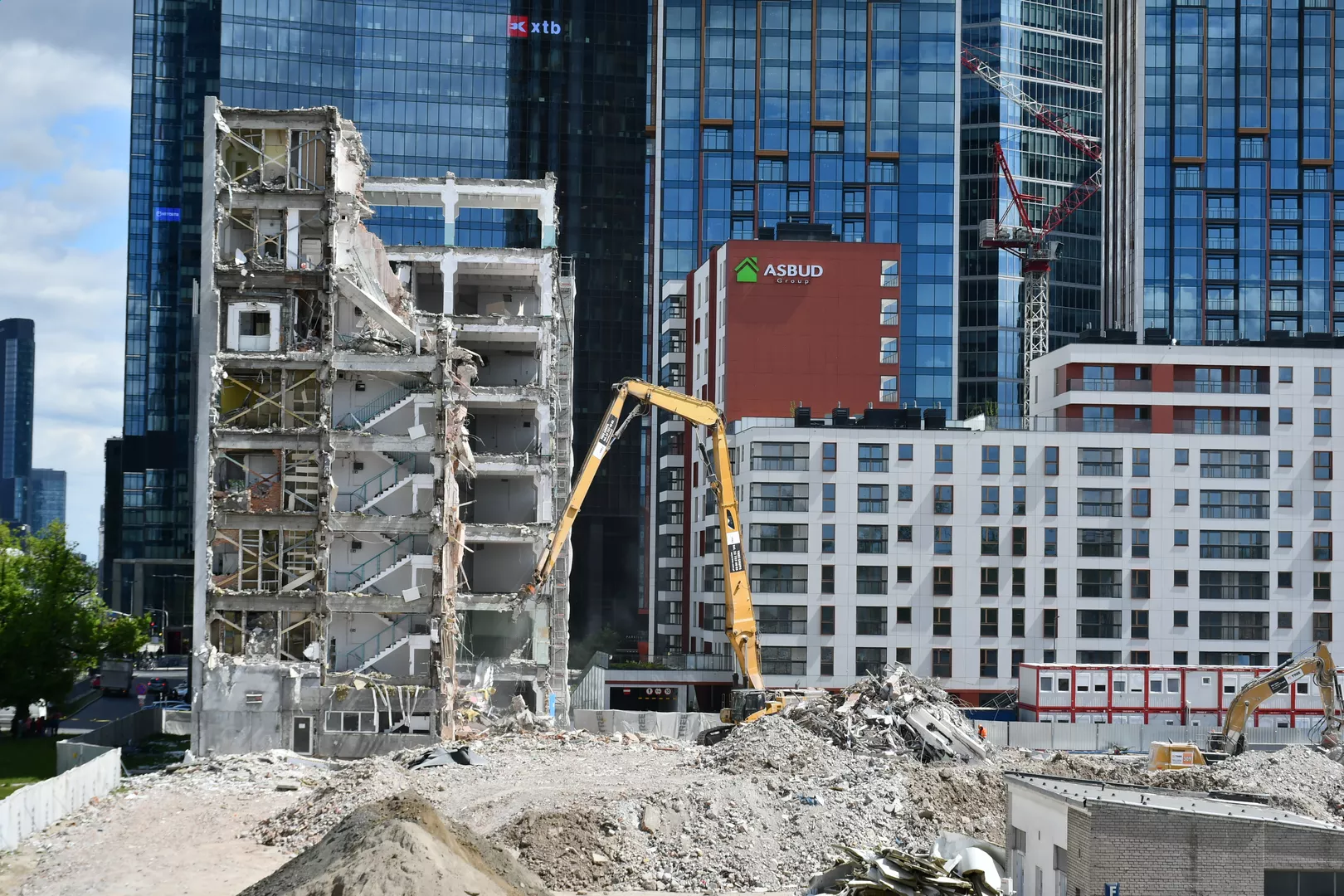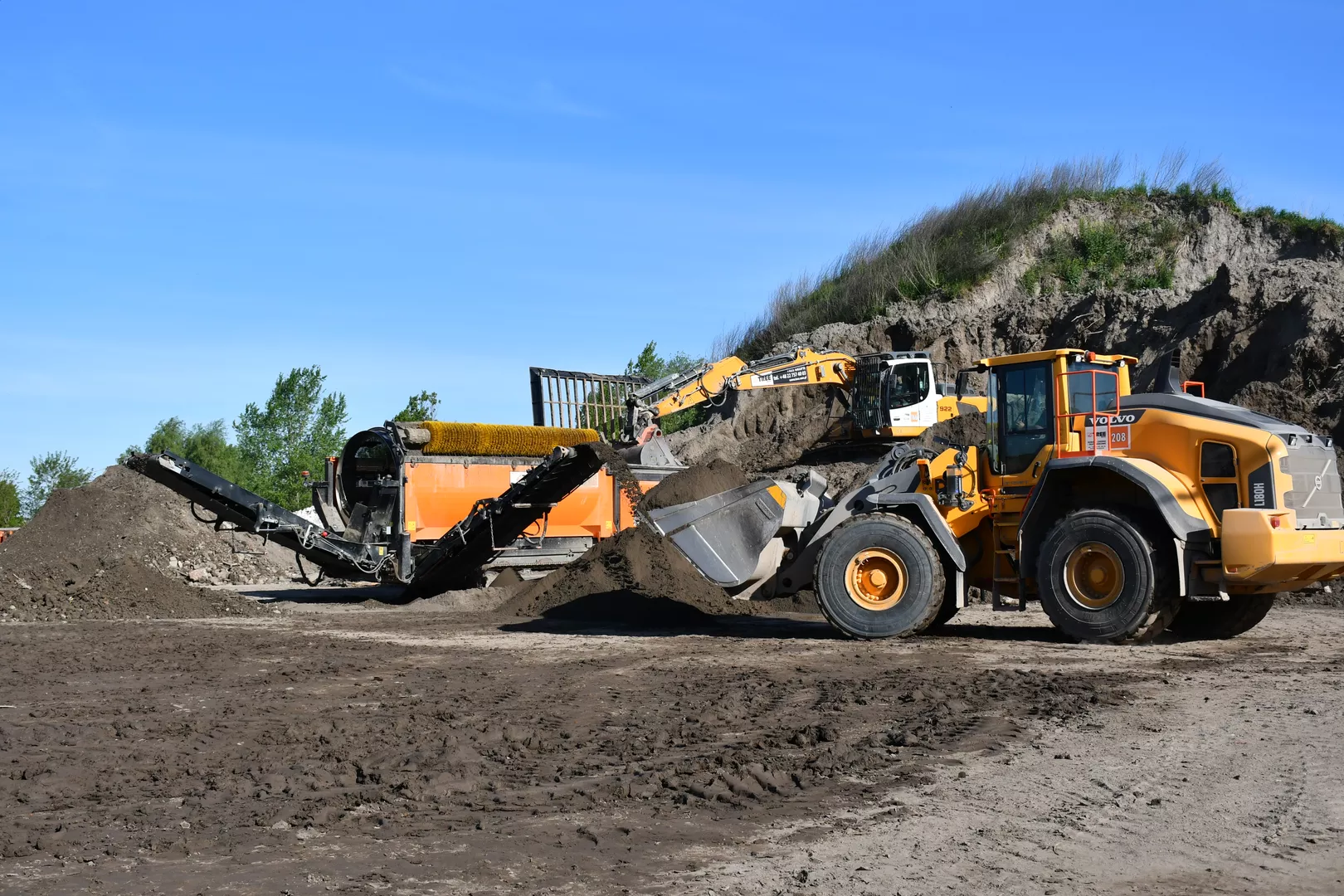
Excavation Dewatering and Wall Protection - Practical Solutions for Mazovian Conditions
Comprehensive guide on designing and implementing excavation dewatering systems, considering the high groundwater levels characteristic of the Warsaw region.
Excavation Dewatering and Wall Protection - Practical Solutions for Mazovian Conditions
Introduction
The Warsaw region is characterized by specific hydrogeological conditions that significantly affect earthworks execution. High groundwater levels, presence of impermeable layers, and varied geological structure require appropriate dewatering systems and excavation protection measures.
Ground-Water Conditions of Mazovia
Regional geological structure:
- Quaternary formations 30-80 m thick
- Sandy layers interbedded with clays and silts
- Groundwater level at 1-3 m below ground surface
- Occurrence of perched water during rainfall seasons
Challenges specific to Warsaw area:
- Seasonal groundwater level fluctuations (up to 2 m)
- Presence of active wells in vicinity
- Dense underground infrastructure network
- Environmental protection requirements in city center
Excavation Dewatering Systems
1. Gravity dewatering
Linear drainage:
- Application in excavations up to 2-3 m depth
- Drainage pipes Ø100-200 mm with filter surround
- Minimum slope 0.5% toward collection well
- Materials: perforated PVC pipes, geotextile, gravel
Drainage wells:
- Depth up to 8 m depending on conditions
- Diameter 800-1200 mm, concrete ring lining
- Dewatering pumps 5-50 m³/h capacity
- Automatic water level monitoring
2. Vacuum dewatering (wellpoint)
Technical parameters:
- Wellpoints spaced 1-2 m apart
- Depth up to 6 m below excavation level
- Vacuum pumps 100-500 m³/h capacity
- Water table drawdown 4-6 m
Advantages for Mazovian conditions:
- Effectiveness in fine sandy soils
- Operation capability in dense urban areas
- Controlled dewatering without impact on adjacent structures
Excavation Wall Protection
1. Strutted shoring systems
Steel shoring:
- Steel profiles IPE/HEB spaced 1.5-2.5 m
- Hydraulic or steel struts
- Maximum excavation depth: 4-5 m
- Costs: 150-250 PLN/m² wall surface
Aluminum shoring:
- Modular systems like PERI, DOKA
- Quick assembly and disassembly
- Multiple reuse capability
- Optimal for 2-4 m excavations
2. Secant walls
CFA (Continuous Flight Auger) wall:
- Pile diameter 600-1200 mm
- Depth up to 25 m
- Concrete C20/25 with bentonite additive
- Permeability: k ≤ 10⁻⁸ m/s
Vibratory wall:
- Larsen profiles L4-L32
- Depth up to 15 m in Mazovian soils
- Protection against water and soil pressure
- Material recovery possibility
Dewatering System Design
Preliminary investigations:
Required studies:
- Geotechnical with filtration parameters
- Hydrogeological with control piezometers
- Existing infrastructure inventory
- Environmental impact analysis
Hydraulic calculations:
- Dewatering system capacity: Q = k × i × A
- Soil permeability coefficient (k)
- Hydraulic gradient (i)
- Cross-sectional area (A)
Design documentation:
Required elements:
- Site plan with equipment layout
- Geological sections with dewatering system
- Technical details of nodes and connections
- Material and equipment specifications
Construction and Monitoring
Implementation stages:
1. Site preparation:
- Dewatering system location marking
- Existing infrastructure protection
- Equipment access road preparation
2. Dewatering system installation:
- Wellpoint/drainage well execution
- Pump and pipeline installation
- Tightness and capacity tests
3. Excavation execution:
- Systematic deepening with dewatering control
- Progressive wall protection installation
- Deformation and settlement monitoring
Monitoring system:
Parameter control:
- Groundwater levels (piezometers)
- Excavation wall deformations (inclinometers)
- Ground settlements (precise leveling)
- Discharged water quality
Measurement frequency:
- Daily basic parameter monitoring
- Geodetic measurements every 3-7 days
- Weekly reports for construction supervision
Legal and Environmental Aspects
Required permits:
Water permit:
- Groundwater abstraction above 5 m³/h
- Water discharge to environment
- Temporary water table lowering
Network operator agreements:
- Water supply and sewerage (MPWiK)
- Power networks (PGE Distribution)
- Gas networks (PGNiG)
- Telecommunications
Environmental protection:
Impact minimization:
- Rainwater infiltration on site
- Excavation water treatment before discharge
- Groundwater quality monitoring
- Site reclamation after work completion
Costs and Schedule
Estimated costs (2025):
Gravity dewatering:
- Drains: 80-120 PLN/lm
- Drainage wells: 2000-4000 PLN/unit
- Pumps: 500-1500 PLN/month rental
Vacuum dewatering:
- Wellpoints: 150-250 PLN/lm
- Vacuum pumps: 2000-5000 PLN/month
- Technical service: 200-300 PLN/day
Wall protection:
- Steel shoring: 150-300 PLN/m²
- Secant wall: 400-800 PLN/m²
- Monitoring: 5000-15000 PLN/month
Schedule influencing factors:
- Weather conditions (vegetation period)
- Administrative procedures (2-6 months)
- Specialized equipment availability
- Coordination with other construction participants
Common Mistakes and Prevention
Design errors:
- Insufficient ground condition investigation
- Underestimated dewatering system capacity
- No consideration of impact on adjacent structures
Construction errors:
- Improper work sequence
- Dewatering system interruptions
- Inadequate excavation wall protection
Best practices:
- Continuous geotechnical supervision on site
- Critical system redundancy
- Regular equipment inspection and maintenance
- Operator training for system operation
Summary
Effective excavation dewatering and wall protection in Mazovian conditions requires a comprehensive approach considering local geological and hydrogeological conditions. Proper ground-water condition investigation, appropriate technology selection, and professional execution with continuous monitoring are crucial. Investment in high-quality dewatering and protection systems translates to work safety, timely project completion, and minimized risk of failures and damages in the vicinity.
Tags
Share this guide
About the author
Inż. Marcin Kowalczyk
Geotechnical and Earthworks Specialist
Category
Earthworks
Reading time
12 minutes
Publication date
May 22, 2025
Similar guides

Starting and Shutting Down Liebherr Machines - Operator's Guide
Comprehensive instruction guide for Liebherr machine operators, presenting correct procedures for starting and shutting ...

How to Prepare Land for Single-Family House Construction Around Warsaw - Comprehensive Guide
A practical guide covering all stages of land preparation for house construction in Mazovian Voivodeship, taking into ac...